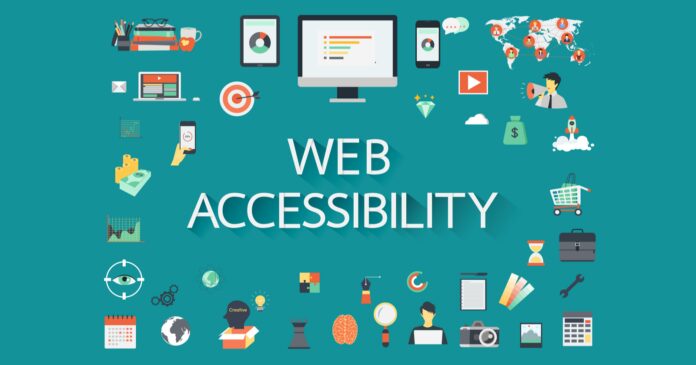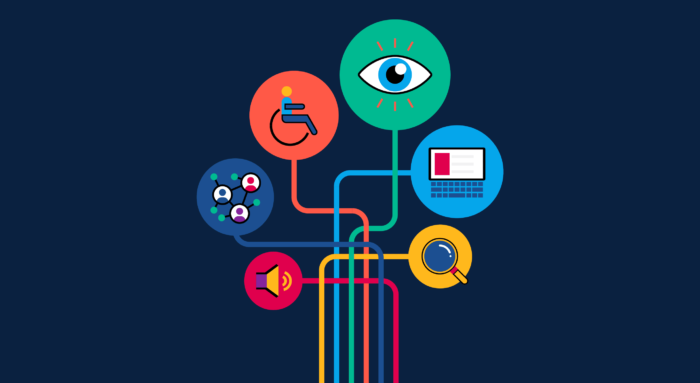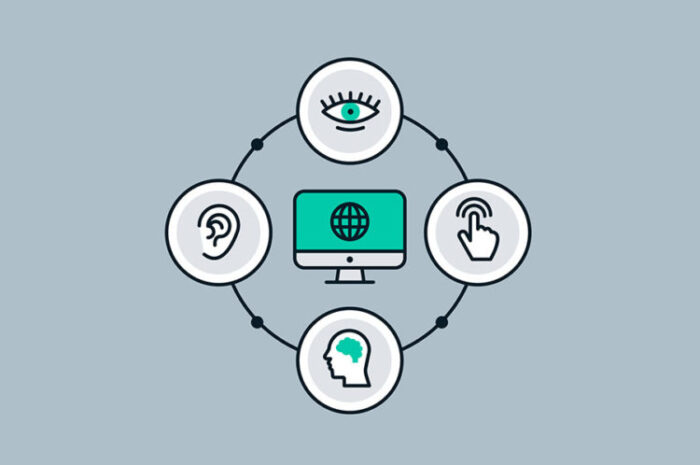
Have you ever visited a website and found it difficult or even impossible to use because of your disability? Unfortunately, this is a common experience for many people who face barriers when trying to access the internet. That’s why we’re here today to discuss an essential aspect of modern web design: website accessibility.
What is Website Accessibility?
This term refers to the practice of designing and developing websites in a way that makes them accessible to everyone, regardless of their abilities or disabilities. This includes people with visual, auditory, motor, and cognitive disabilities. Accessibility is not just about making a site available to people with disabilities; it’s also about providing equal access to information and services for everyone.
One of the most critical aspects of website accessibility is providing alternative ways for users to access content. This can include things like providing text alternatives for images, captions for videos, and transcripts for audio content. For example, providing transcription services for audio content can be particularly beneficial for users who are deaf or hard of hearing, as it allows them to read the content instead of listening to it. In addition, it can also benefit users who may have difficulty understanding the audio due to language barriers, background noise, or other factors.

The Impact of Website Accessibility on User Experience
Website accessibility is not just about compliance with regulations; it’s also about providing a positive user experience for all users. If your website is inaccessible to certain groups of people, it can lead to frustration, dissatisfaction, and even legal action. On the other hand, a site that’s designed with accessibility in mind can provide a better user experience for everyone.
In fact, studies have shown that accessible websites are often more user-friendly and easier to navigate, even for people without disabilities. For example, providing alternative text for images not only makes them accessible to users with visual impairments but also provides context for search engines, which can improve your search engine optimization (SEO). Similarly, providing transcripts for audio content can not only benefit users with disabilities but also make the content more searchable and easier to consume for all users.
The Legal and Ethical Importance
Ensuring website accessibility is not just a matter of good design; it’s also a legal and ethical obligation. In many countries, including the United States, the United Kingdom, and Australia, sites are required by law to be accessible to people with disabilities. Failure to comply with accessibility regulations can result in legal action, fines, and damage to your reputation.
Moreover, making your site accessible to everyone is also an ethical obligation. As a society, we have a responsibility to ensure that everyone has equal access to information and services, regardless of their abilities or disabilities. By designing sites with accessibility in mind, we can promote inclusion and diversity, and ensure that everyone can participate fully in the digital world.

The Benefits of Designing Accessible Websites
Firstly, designing accessible websites can increase your page’s visibility and reach. By providing alternative text for images and transcripts for audio content, you can make your site more searchable and discoverable, which can increase traffic and engagement.
Accessible websites can improve usability and user experience. By providing alternative ways to access content, you can ensure that everyone can use your website, regardless of their abilities. This can lead to increased engagement, customer satisfaction, and loyalty.
Designing accessible sites can improve your brand reputation and trust. By demonstrating your commitment to inclusivity and diversity, you can build a positive brand image and attract a wider audience of customers and clients.
Common Barriers and How to Overcome Them
Despite the many benefits of website accessibility, there are still many barriers that prevent sites from being fully accessible to everyone. Some of the most common barriers include:
- Inaccessible coding and design practices
- Poorly designed navigation and layout
- Lack of alternative text for images and videos
- Lack of captions or transcripts for audio content
- Lack of keyboard accessibility for users with motor disabilities
Fortunately, there are many strategies for overcoming these barriers and ensuring your website is accessible to everyone. Some of the most effective strategies include:
- Adopting accessible coding and design practices, such as using semantic HTML, ARIA labels, and CSS for layout.
- Using clear and consistent navigation and layout to help users find what they’re looking for quickly and easily.
- Providing alternative text for images and videos, and using descriptive filenames and alt tags to improve searchability.
- Providing captions or transcripts for audio content to ensure it’s accessible to users with hearing impairments or language barriers.
- Ensuring your site is keyboard accessible, and providing keyboard shortcuts and focus indicators to make it easier to navigate for users with motor disabilities.
The Role of Assistive Technologies
Assistive technologies are devices or software that can help users with disabilities access and use websites. There are many different types of assistive technologies, including screen readers, speech recognition software, Braille displays, and specialized input devices.
When designing accessible websites, it’s important to consider the needs of users who may rely on assistive technologies to access and use your website. This may involve providing alternative ways to access content, such as transcripts or alternative text, or ensuring that your website is compatible with popular assistive technologies.

Testing and Evaluating
This can involve using automated accessibility testing tools, such as WAVE or Accessibility Checker, to identify and fix any accessibility issues. It’s also important to conduct manual accessibility testing, which involves testing your website using assistive technologies and with users with disabilities.
In addition to testing, it’s also important to evaluate the effectiveness of your website’s accessibility over time. This can involve tracking metrics such as traffic, engagement, and customer satisfaction, and using user feedback to identify areas for improvement.
Conclusion
Website accessibility is an essential aspect of modern web design that’s becoming increasingly important as more and more people rely on the internet for information, communication, and commerce. Designing accessible websites not only ensures compliance with legal and ethical obligations but also provides a positive user experience for all users, regardless of their abilities or disabilities.













